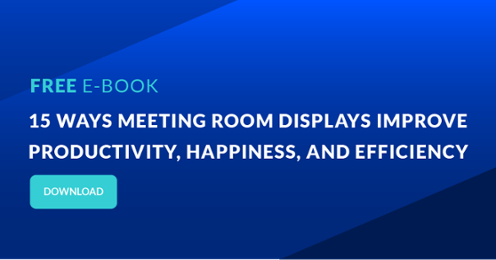Meetings are hugely expensive. Any meeting that will not directly generate revenue or cost savings, either in the form of a key decision or a concrete plan of action, is likely a waste of money. Not to mention the cost of all the resources and time spent on planning the meeting. And probably a lot of people and organizations are unaware of that.
During the next meeting you attend, add up the hourly cost of every person in the conference room. Then imagine, that you are writing the check for that meeting. If the money came out of your pocket, would you have the meeting? Has the meeting been worth that amount? Who is going to pay for it? And would you have any meetings at all? Then factor in the opportunity cost for what every person in the room could be achieving.
So, what can you do about this?
How can we reduce meeting costs?
But to prevent having too many of these highly costly meetings going forward, here is what to look for and what you can do about it.
According to user statistics and data based on Microsoft 365, 50% of meeting time is unproductive because, for 50% of the scheduled meeting, people are multitasking, writing emails, or focusing on other things rather than paying attention to the meeting they are in.
Make sure your meetings are worth the time and the associated costs. Follow these seven steps to reduce meeting costs and increase productivity levels.
1. If the word "information" is part of the agenda, be aware
No agenda should include the words information, recap, or review. The only agenda you should have is one bullet point: "Set product launch date," "Select software developer for database redesign," or something that requires a group to debate, discuss and decide.
Avoid thinking of the "but we need buy-in" excuse. Meetings do not create buy-in. Great ideas create buy-in. Great projects create buy-in. Instead, focus on explaining why you are doing it, help pople understand why it is important that you do it. A great project or idea that aligns with your company's objectives makes a buy-in.
As for information? Share it before the meeting. If the group needs to make a decision during a meeting, they should have the information they need to make that decision ahead of time, so they have a chance to be prepared. Send documents, reports, a small youtube video, etc. to attendees in advance. This way people will arrive informed, and will be able to make a decision based on the same information level.
Keeping your team informed is crucial for your meeting. See how to provide the right information in the right place using Meeting Room Displays.
Holding a meeting to only share information wastes the entire group's time, and the company's money. Think about it next time you attend a meeting: Is this is meeting to make a decision, or is it only to share information that could have been shared without having an actual meeting?
2. Do not go with the standard default meeting length
Calendars are usually formatted in 30- or 60-minute chunks. Also, we are programmed to expect things to start and end at certain times, like, 11:30 am or 8 pm, or 5:30 pm. We expect round numbers, and we are more comfortable that way.

So a meeting that will start at 9 am is usually scheduled to run until 9.30 am or 10 am, even if ten minutes is all that is required to make a decision. What always happens? You fill the time. When was the last time a meeting you attended broke up early and you actually, actively ended it before the meeting was finished in your calendar?
Meeting time is like buying a bigger house. No matter how much space you have, eventually, you fill it with stuff. Ask yourself: Do you need all that space/time?
Instead, decide ahead of time how long a meeting should last solely by what you need to accomplish. Then schedule the time accordingly to that agenda when you book the meeting in your meeting management platform. Put on a specific amount of time at each bullet point. Tell everyone the meeting will end on time, no matter what. If you only need ten minutes, schedule ten minutes. And stick to it. And do not forget, if you only need ten minutes, do you need to hold the meeting?
Next time you are in a meeting and the host says: "OK, we are running out of time here. We only have 10 minutes left, and we need to get going with this project," think about how productive and focussed you then are, and how many decisions you can take.
There is a strange thing about meetings - You are always bringing your A-game in the end when the session is running out and you need to make that decision. Now, what would happen if a meeting started that way, and you try to limit yourself only to have 15-minute meetings? People would meet up prepared and ready!
3. Start on time - do not allow people to be late
It happens all the time. A few individuals get to the meeting early. They start chatting. The room fills. It is time to start, but the last people have not arrived. So you wait. And wait a little longer. And perhaps you run out of coffee, so you are going to refill it.
When it is time to start, go ahead and start. Start every meeting on time. Do not allow the first minutes of a meeting or a workday to be wasted, or the meetings to start late.
Some people are lazy when it comes to morning meeting management and meeting culture. To break the bad habit start when it is time to start, start! Otherwise, you waste other people's time and the company's money.
Would you like to learn more productivity tips?
4. Stay focused and on track
Do not allow people to "think out loud." Why? They should already have their thoughts together. They should show up with concrete ideas that are based on the information you provided ahead of time. Because you made sure to send that whitepaper and summary before the meeting with the agenda.
If it is a brainstorming session, fine, of course. Then it is more than OK. Otherwise, expect people to come prepared with fully formed thoughts about the particular topic that is addressed. Anyone who did not take the time to prepare should not be allowed to participate when any pop-up thoughts.
Again, think about it next time you attend a meeting that does have a clear agenda, a timeline, and a purpose. Did the meeting go as expected, was the goal of the meeting reached, and was the agenda followed?
5. Make sure to establish accountability
Great meetings result in decisions. That is why we have meetings. But a decision is not a decision if it is never carried it out or executed. Next time you are in a meeting make sure to establish what, who, and when.
Never let ownership be fuzzy or unclear. An action item without a clear owner (and perhaps a timeline) is like saying: It is someone else's responsibility. Which means it quickly becomes no one's responsibility. And then what happens is having wasted meetings, wasted time, and wasted money!
6.A list of action items is all you need
A lengthy recap is often never necessary. The only recap of a meeting you need is a list of action items. State what was decided, what will be done, who is responsible for doing it, when it will be done, and nothing else - that is good meeting management! Try it out for yourself and see how simple it is.
Never include items like, "Discussed the possibility of redesigning handover processes between departmental responsibilities."
If all you did at the meeting was discuss reorganization, then next time prioritize making a decision, and including a "discussion" in a meeting recap implies that group discussions that don't result in decisions are worthwhile and perfectly OK.
When others see that memo what happens is that the next meeting they have will be a discussion about something since it is allowed, right? Do not give general discussions credibility by including them in a meeting recap. People might start thinking general discussions have value.
7. Go out and get things done
If the goal of the meeting is to improve "team cohesion," then do not have a meeting. Team members do need to work well together to be productive, have a meaningful work life and bring value to the overall objectives. But they do not need to hang out or "bond" to work well together. Especially not in a meeting.
Great business relationships are created when people work together toward a common goal and aim for the same vision. And, in that process towards that, can count on one another to do their part, meet commitments, deliver on time, are accountable for deliverables, and get things done.
In short, great relationships happen when you produce tangible outcomes and achieve meaningful goals. Not before - after. It is the "getting things done to meet your goals" part that brings great teams together. Not sitting in a meeting room to discuss how it could be done. Or how it should have been done.
Do not mistake interpersonal relationships for productive relationships. Accomplishing hard things is the best way to improve team chemistry - not sitting in a conference room. Not all meetings are created equal and should be treated the same way.
Well, not all meetings are created equal, and of course, some meetings have to be informative, take time, and include a large number of attendees to have a discussion about a certain thing.
According to Microsoft user data, 50% of meeting time is spent unproductively - on multitasking and distractions. A tip that would improve meeting productivity and thus, in the long run, reduce overall meeting costs, is to:
- Stick to the meeting agenda and get over with the important tasks as quickly and efficiently as possible.
A small thing like having standing meetings, or just having the meeting in a less formal setting like a huddle in a modern workspace, can get the attendees more focused and thereby save time and money.
There is always room for improvement! So next time you are in a meeting that you do not believe brings any value at all, people are multitasking, arriving late, do not send out an agenda, make 3-page meeting minutes (including the discussion you had - Not the decision you took), go write a check for the amount of time spent on that meeting and see who is going to pay for it.




